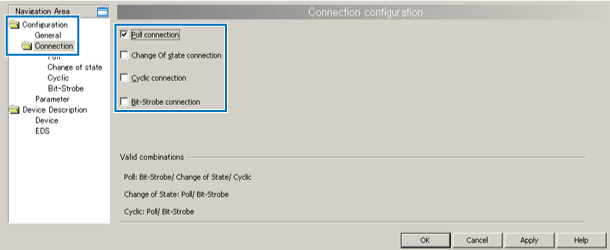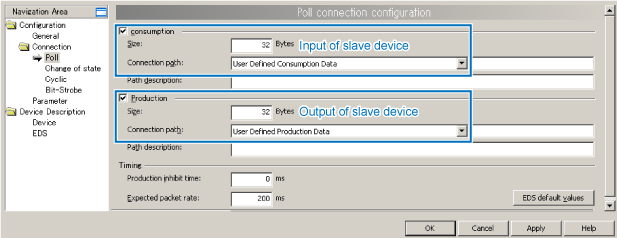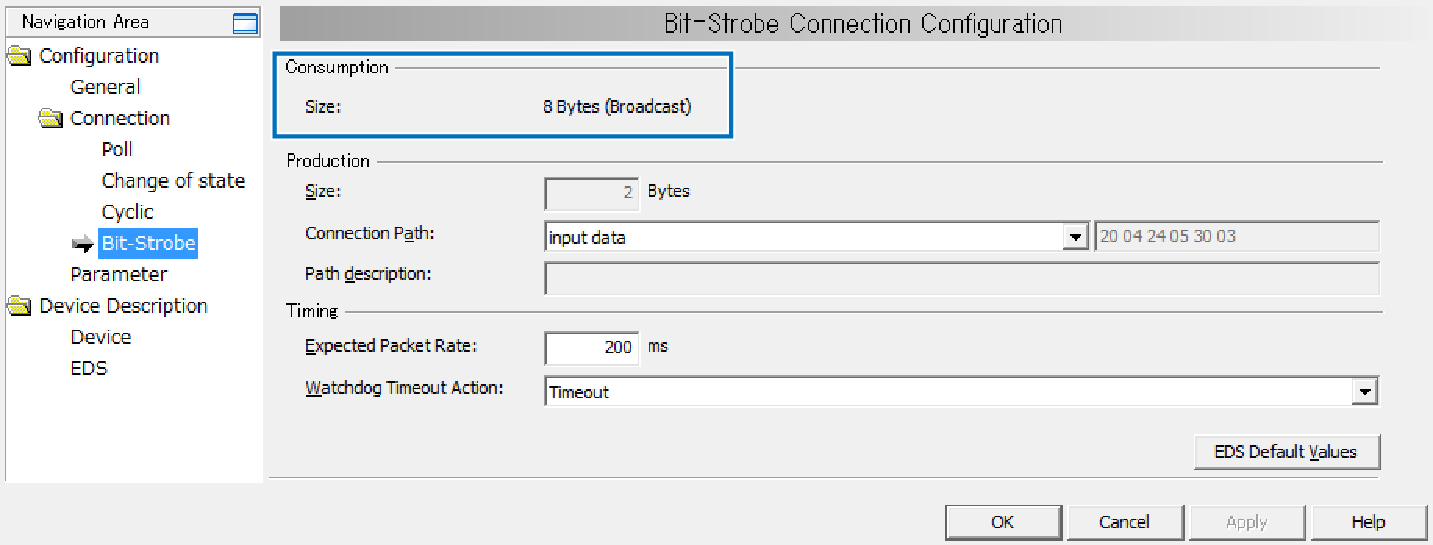ID : 5563
I/O Size Setting for Slave Device
This section describes the way of I/O size setting for each slave device connected. Allocate I/O size for each slave device being connected. The layout of this setting window of the following STEP 2 to STEP4 may change depending on the type of DeviceNet slave device.
1
Double click the icon of a slave device connected.

2
From the Navigation Area in the left side of the display, click [Configuration]-[Connection].
Select a connection method for slave device connection from ; Poll connection, Change Of state connection, Cyclic connection, and Bit-Strobe connection. A connection method that is not supported by the device will be gray color and it will not be selectable.

3
According to the connection method selected at STEP2, click the following items.
| Communication method | Items |
|---|---|
| Poll connection | [Configuration]-[Connection]-[Poll] |
| Change of state connection | [Configuration]-[Connection]-[Change of state] |
| Cyclic connection | [Configuration]-[Connection]-[Cyclic] |
| Bit-Strobe connection | [Configuration]-[Connection]-[Bit-Strobe] |

4
From the Navigation Area pane, click [Configuration]-[Connection]-[Poll].
[Consumption] in the upper part represents the input of slave device, which corresponds to the output of the robot controller. [Production] in the lower part represents the output of slave device, which corresponds to the input of the robot controller. The setting is performed by a byte-unit. (1 byte = 8 bits) Change the setting of [Connection path], if necessary.
When the setting completes, click [OK].

When Bit-Strobe connection is used, the size of "Consumption" may be fixed 8-byte at times. In this case, 64 ports will be occupied for DeviceNet master output.

The longer the Production inhibit time, the longer the synchronous time between the master controller and the slave controller.
5
For each slave device, perform STEP 1 to STEP4 to set I/O size..
This completes the I/O size settings for slave device.
ID : 5563

